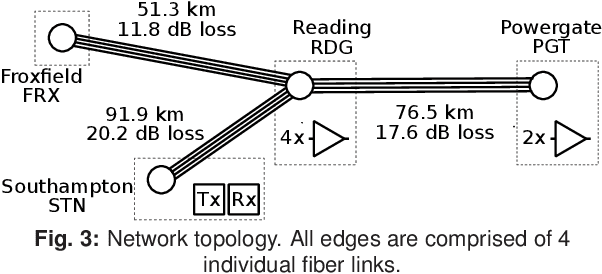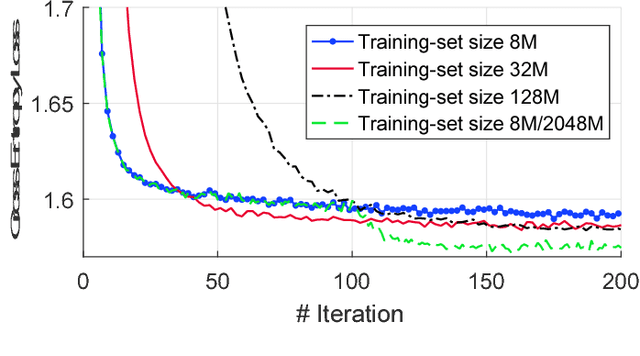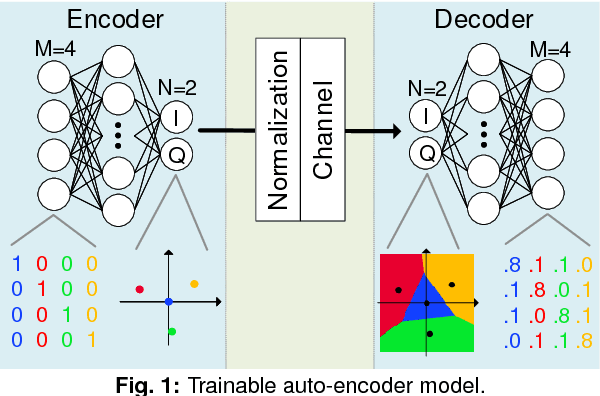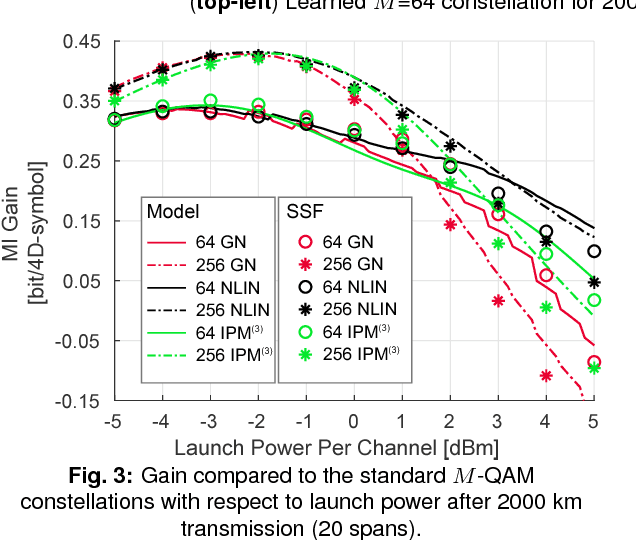Rasmus T. Jones
Spectral Power Profile Optimization of Field-Deployed WDM Network by Remote Link Modeling
Jul 04, 2022



Abstract:A digital twin model of a multi-node WDM network is obtained from a single access point. The model is used to predict and optimize the transmit power profile for each link in the network and up to 2.2~dB of margin improvements are obtained w.r.t. unoptimized transmission.
End-to-end Learning for GMI Optimized Geometric Constellation Shape
Jul 19, 2019



Abstract:Autoencoder-based geometric shaping is proposed that includes optimizing bit mappings. Up to 0.2 bits/QAM symbol gain in GMI is achieved for a variety of data rates and in the presence of transceiver impairments. The gains can be harvested with standard binary FEC at no cost w.r.t. conventional BICM.
Geometric Constellation Shaping for Fiber Optic Communication Systems via End-to-end Learning
Oct 01, 2018



Abstract:In this paper, an unsupervised machine learning method for geometric constellation shaping is investigated. By embedding a differentiable fiber channel model within two neural networks, the learning algorithm is optimizing for a geometric constellation shape. The learned constellations yield improved performance to state-of-the-art geometrically shaped constellations, and include an implicit trade-off between amplification noise and nonlinear effects. Further, the method allows joint optimization of system parameters, such as the optimal launch power, simultaneously with the constellation shape. An experimental demonstration validates the findings. Improved performances are reported, up to 0.13 bit/4D in simulation and experimentally up to 0.12 bit/4D.
Deep Learning of Geometric Constellation Shaping including Fiber Nonlinearities
May 10, 2018



Abstract:A new geometric shaping method is proposed, leveraging unsupervised machine learning to optimize the constellation design. The learned constellation mitigates nonlinear effects with gains up to 0.13 bit/4D when trained with a simplified fiber channel model.
 Add to Chrome
Add to Chrome Add to Firefox
Add to Firefox Add to Edge
Add to Edge